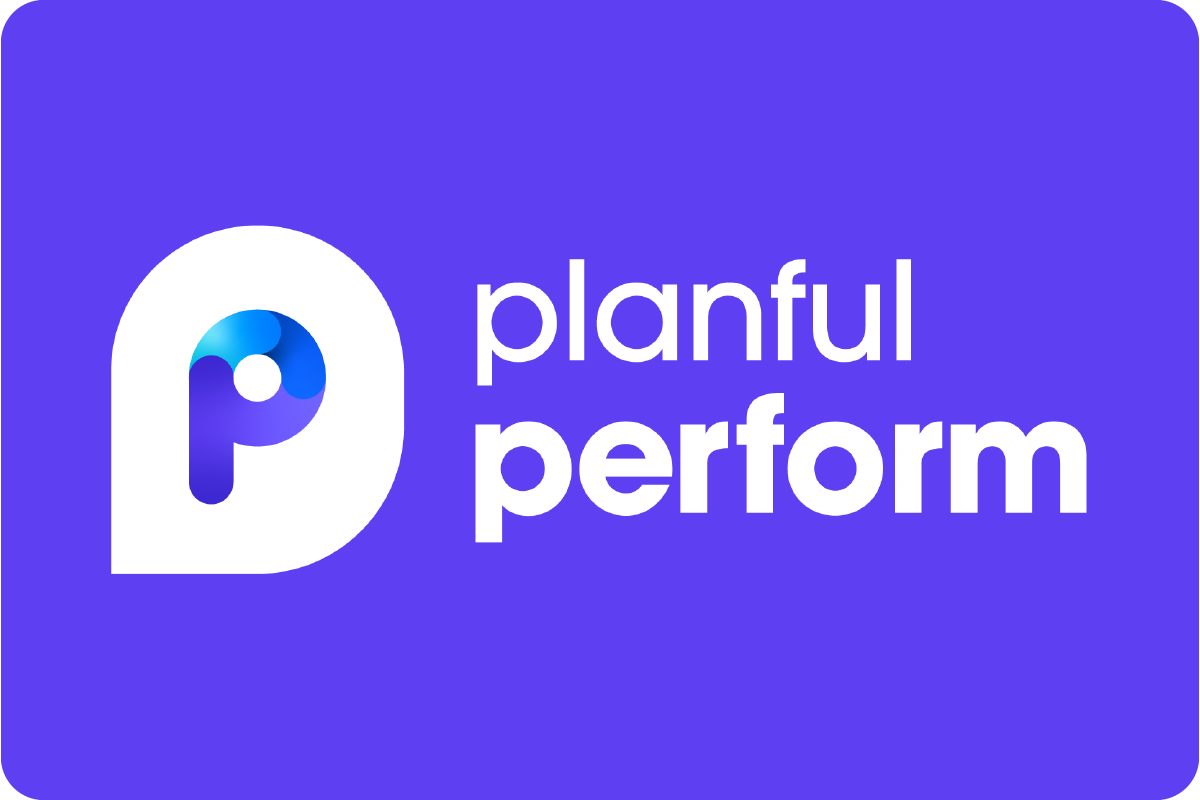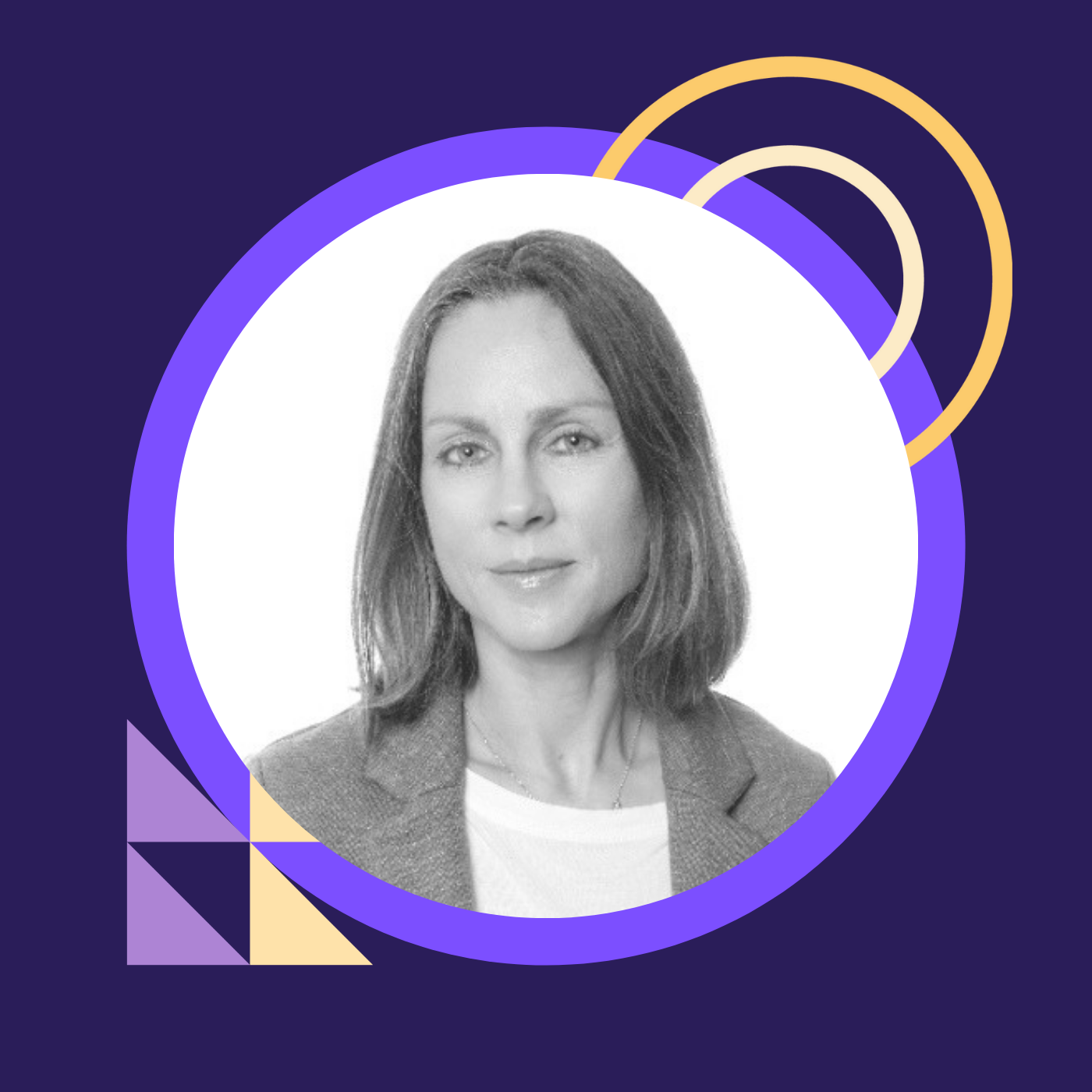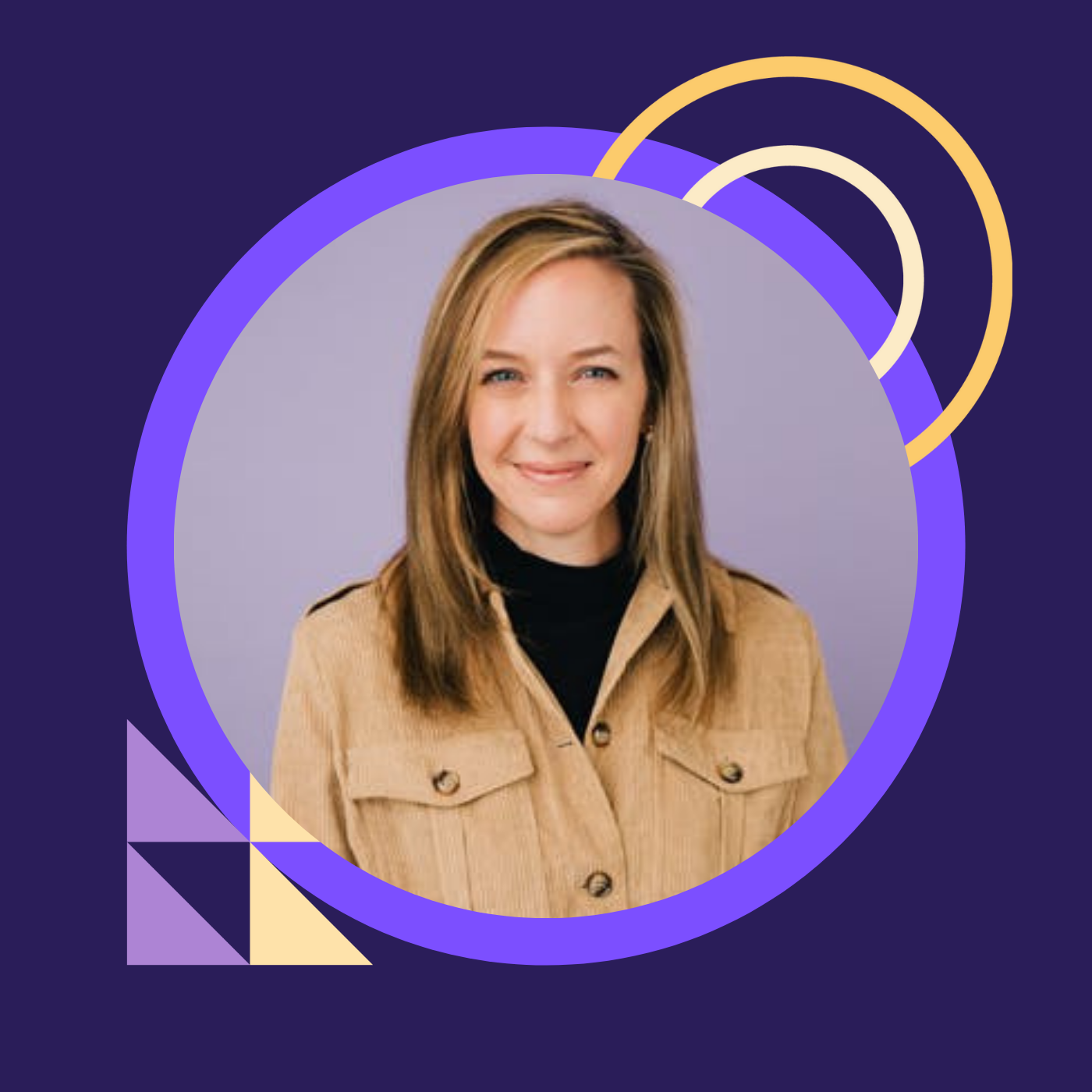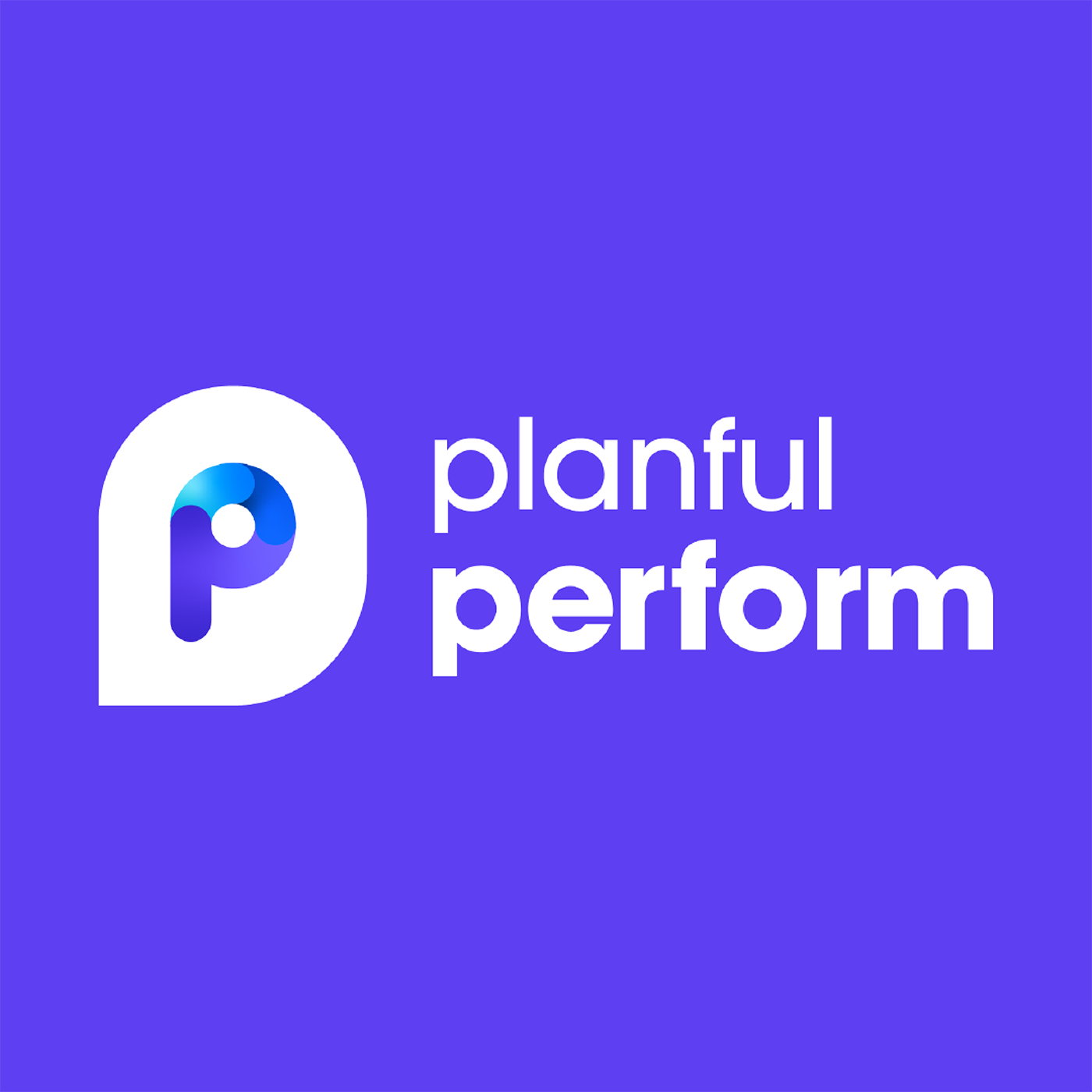How CloudSense Wrote the Book on Workforce Planning 101 | Jane Watkins
- 0.5
- 1
- 1.25
- 1.5
- 1.75
- 2
Speaker 1: Hi everybody. Thank you for joining me today, my session. As you might realize, I'm not from around these parts. So if you have any problems with my accent and you can't understand me, then just raise a hand. So I'm going to talk to you today about workforce planning and how CloudSense has implemented it. So a little bit about me, if I can get the... Okay. So I'm VP of Finance at CloudSense. I've been with the business now for around three years. I actually started off as a qualified accountant at Ernst& Young, but post qualification, I pretty much jumped ship and went straight into industry. So I've worked for big, medium, and small companies across different sectors, but primarily I've worked in tech and I guess that's where I found my home. Okay. Just bear with me a second whilst I get this... Okay, little bit about CloudSense. So CloudSense is a platform that delivers sales transformation, enabling our customers to launch and sell products and services faster. So for those of you that aren't aware of what CPQ is, which is configured price quote, I'll just give you a bit of an example. If you want to go buy a mobile phone and a mobile phone package, you'll go to your provider. You want to go choose a handset. You're going to choose a bundle of minutes, text, data. And what you want to be able to do is just literally press click buy. But what's powering that ability behind the scenes is our software or configured price software, which is allowing quite a complex product catalog and product lifestyle to enable to power you to be able to just make that convenience click and buy decision. So that's essentially what our software does. But on a B2B basis, it will also do the whole contract negotiation process. So we can have framework agreement set up, we can manage the negotiation process, and we can take that right through to the document generation and the e- signatures. Okay. So what we're going to cover today, I'm going to go through our business case, just bear with me one second. I'm going to cover how why CloudSense chose Planful and how workforce planning has helped us transform the way that we forecast and plan our people costs. I'll talk about our business costs case and how we implemented workforce planning and how we use workforce planning on a day to day basis. And then I'll just move on to what's next for us with CloudSense and workforce planning. So our business case, just going to start with a quote," Good business planning is nine parts execution for every one part strategy," and that's very important. Without a robust planning inaudible with good data, a robust planning process, then the actual strategy is going to be ill informed and weak. And so I'm just flicking between changing slide so apologies for the little delay. I think I've given the game away, yeah? Okay. So what was our challenge? The impact of the pandemic on CloudSense and organizational changes meant that we had to reforecast quickly. We had to conduct scenario planning, including cost restructuring, moving resources around our different entities. But with our Excel setup, this was all time consuming and prone to error. In addition, we had a new CEO and we had lots of data requests coming from our investors, which meant the finance needed to focus on business partnering, empowering our execs and our managers to own their data and be accountable for their performance. So as with so many people, our modeling was in Excel and who has not experienced the frustration when a file is corrupt, it's not saved, someone overrides a formula, or uses the wrong version. In CloudSense, finance controlled the planning models. So due to the... I was going to say inexperience or incompetence, but let's say inexperience of our execs and senior management in using tools and models and sensitivity over our data, this led to a lack of collaboration and frustration from our business regarding our updates, changes, and access to information because we were controlling everything and they couldn't get their little hands on it to have a play. So big constraint for us was Excel. So as with a lot of people with inaudible experience with Excel, we've got manual entry leading to errors and inconsistencies. We've got inefficiency in it, so we're exporting from various different systems, we're manipulating data, cutting and pasting it into a model. We actually had disparate models as well. So we had a group model that controls all our key outputs, but behind that we had disparate models. So we had a model for our existing revenue, we had a model for our new bookings, we had a model for our people costs, we have a model for our OPEX costs, and we also had a model for our professional services. So you can start to see how this might get a little bit messy. And we didn't have links between those files because we wanted to limit what might happen with the corruption of links. So we used to cut and paste our summaries out of the individual into our group model. And as we've discussed, there's a lack of collaboration. And another issue, and I think Grant was talking about this yesterday, everyone loves Excel, great functionality, but when it comes to collaboration and security, it really doesn't work. Okay. Just want to talk now about specifically our problems with forecasting people. So people are our key resource, as with so many businesses, and workforce planning is the key to success of CloudSense. So we needed a streamlined and transparent process that enabled the business to understand and track its resources. But actually what we had was we had Excel. So we had no link to our HR system. So there was no consistency in the data and it took a lot of time to export information from our HR system, reconcile that data, and then push that into our separate model. And also because of that, if we were trying to make ad hoc changes on the fly, we ended up using four inaudible in our main model because the trouble it would take to update the backing model and then copy paste it back in just took too long. And so, of course, that led to models being out of sync. Forecasting starters and leavers. That was a problem because of the time that it actually took to consolidate our people information. By the time we actually had it and then disseminated it to the stakeholders, they would just say," Hang on a minute, that guy's left now. That person's had a pay increase. That hire's position's been hired." So that just led to the frustration with the managers and it just undermined the credibility of our model. So we also had our modeling assumptions, and I'm sure again, a lot of you people that have been experienced in building very complex formulas, trying to pull in all your different assumptions. And the trouble with that is once you've got a big, scary formula, one, if somebody else is trying to pick it up, they can't unpick what you've done. Secondly, it's prone to error. What if somebody overwrites it? And also it can make it quite inflexible to change. So if you just want to make... You've got an anomaly within your data and you just want to change something, you don't really want to go overwriting that formula and then somebody tries to drag that formula down only they're dragging down a hard coded value. So we also had the issue with tracking employees. Because of the way our data was structured, and we had the inconsistency with BambooHR which is our HR system, when we tried to compare data, it was just basically a bit of a inaudible there. So when we were trying to have those reviews with our managers and say where were they against their budget, we had to spend a lot of time just reconciling data to be able to explain to them what their performance was. And again, just touching on security because all the employee data was contained in one Excel model. It was actually difficult to share that and that we couldn't share it with anybody because the security and the sensitivity of the data. So we ended up having to cut and paste separate files for sharing. So again, we're just opening this all up for manual error. So looking what Planful could offer CloudSense to solve our problems, it was really easy to see how Planful could make a dramatic shift change in our planning process. So Planful was offering us multisource data and integration so that meant we could take our information from our accounting system, we could take our information from us CRM, and we could take information from our HR system. Being a cloud based collaboration and this is exactly what we wanted as a business. We wanted to be able to empower people, both within finance and the wider business, to be able to get involved in the planning process and that all leads to them owning their data. Another big point was the ease of reporting. So that was the distribution and interaction and transparency that would bring and all leading to better decision making. And then coming back to the security point, the controls and workflows that we have within CloudSense mean that we can really quite closely control who sees what, when, how, where. Okay, going to talk about our implementation now. Actually, sorry. I think I've skipped a slide. Apologies. So I'm missing the important thing, which is the key to this presentation, which is actually talking about workforce planning and what workforce planning was going to give to us as well. So specifically, with workforce planning gives the ability to streamline our planning process, reducing the time that we spend on data input and focusing more on the analysis. It also enables us to incorporate detailed assumptions into our planning without the need for error prone formulas. And again, we can share complex information and get feedback from the business, making the process much more interactive and controls mean we can open up to the wider business. Okay. And now, we're going to move on to implementation. So I just want to talk through our roadmap. You'll see the first page is actually implementation of our accounting system and not Planful. And the reason why I've put that in is because we were implementing a new system along the same timeline as Planful. But what implementation for the new system allowed us to do was completely reevaluate our chart of accounts and base it on our business needs. And that was really important to have that structure in place first, before we started moving into the Planful implementation. So we actually originally started our implementation, aiming to have a 6 + 6 forecast last year. However, I think we were a little bit ambitious or maybe I was a little bit ambitious because I decided that we would start this implementation during the tail end of our intact implementation and have them running in parallel. But actually, what that meant was, and also due to the loss of a key member of the team, the actual implementation was slow to start. And ultimately, I ended up restarting the implementation myself on my own at around October last year. So we were actually running into a budget process. And when we do our budget process, we also do a 9 + 3 process and I was implementing Planful. I didn't have any gray hair before that. So I'm not going to recommend that to people. It perhaps is indicative of the fact that Planful is actually a pretty easy system to implement and I don't think I could have done Intact in parallel. But with Planful it did work, it was just perhaps a little bit more than I needed at the time. So phase three is where we are at the moment and we are using workforce planning on a daily basis. And what we're doing now is we are moving on to enhancing our reporting for workforce planning, but we're also doing regional services forecasting, which we weren't doing before we had Planful. And that is directly facilitated by Planful. And by phase four is going to be our wider rollout and I'll talk about that a bit later. Okay. Okay. I think I'm moving on... I think I'm getting trigger happy with my clicks. Okay. So just want to go over what our previous process was. So we would download information from our HR system. It was in a completely different format from our model. There was inconsistencies in the data so we had different naming conventions, we had different IDs, just a completely different structure. So we would take a lot of time manipulating the data from our HR system, which is BambooHR, then we would use v- lookups to try and pull the information into our people model. But because of the inconsistencies in data, then we'd go through and we'd have to manually import all the not applicables to get to a set of data that we are happy with. We then had the complex formulas for the assumptions, which often we just found that it would lead to inflexibility and manual overwrites. Because we were using a separate model, we would then cut and paste that data and we would share it with our various stakeholders. Then inevitably they would have a play with those. They would add columns, they would add rows, they would overwrite formulas, they would add some nice, pretty colors, and then they would send it back to us, and they," Here you go." So we would have to then start again. We'd have to manipulate that information again, get it back into a format that we needed to put into our model before we could reconsolidate. And after all that was done, we would then cut and paste that summary into our main model. And if inaudible someone that came along and said," Would like to make some changes," we would just look at them stare and give them the evil desk and say," Are you sure?" So the key issues that we had, we had an inefficient process and we would find that we've got lots of differences between what was actually happening in Bamboo and what we were giving out as a budget or a forecast. And with the pandemic and the organizational changes that we had in the business, we really needed to be able to make these changes on the fly and see the impact of different scenarios, but we just had an inflexible system that we just couldn't do that with. So talked about the data issue and the inconsistencies, talked about issues with the sharing and the collaboration, and giving information to exec managers who love to meddle, and the point there about the different scenarios. So if we wanted to try something different, we would literally take a copy of our Excel model, a copy of our group model, make changes, put it into another one. But in terms of the reporting and comparing those, everything was just manual. We would be cut and pasting from here to there. What version did we use? Did you update that? I did not update that version. Did you save it before you closed? No, I didn't saved it. I think we've all been there at some point. And so basically, we just had a lack of transparency when we were trying to share information for the execs. And particularly a time when we are trying to empower those execs and get them to own their data, they're reliant on us and we can't give them that transparency. Okay, so just moving on our implementation. So just going to talk about effectively two key stages that we went through. So the first one for us was talking to our stakeholders. We really needed to understand what they wanted prior to setting up the planning and data structure and workforce planning. And actually, for CloudSense, this was a great opportunity for us to align our information with Bamboo and also to introduce some new roles, some new fields that we wanted. So one of these was a role ID. So rather than everyone having just an employee ID, which is pertinent to them as a person, we introduced the concept of role IDs for positions so that we could track positions as they changed. And if people left that position, we could see that it was still open and needed to be hired. So we really needed to understand what data structure was most useful to our business. So whilst pay structure is determined by location, we report functionally and we needed to ensure that we could slice and dice the information by department and team, and also make sure that this was aligned with Bamboo. So we set up our employment types by location as a way of grouping our employees, but we also added additional employee types for contractors and students, as these are types which have a different pay structure based on their type rather than their location. Again, this is really easy to do. So we set each employment type up by country and then we were able to tag different compensation items to those employment types. And again, I think in some of the sessions yesterday, if anyone went to any of the workforce planning session, they'll be familiar with the term employment types and compensation items. And also perhaps seeing the screens of how to set up compensation items. These are great because it's easy to have a multitude of different compensation items for your different pay elements and the benefits. And so to say you can then attribute them to your different employee types. One of the good things that this helped us do was we wanted to see what the changes were and the impact on our P& L cash flow, if we changed the payroll tax assumptions for Croatia, which is where we have one of our biggest offices. We've kind of been looking at our assumptions and thinking," Hmm, they're a bit out of date. We need to amend those," but it was literally clicks of a button to be able to go in, change the assumption, and then flow that through and see what the impact on our cash flow and P&L was. We couldn't have done that in Excel that quickly, just really couldn't. So having the employee types and the compensation items set up in workforce planning makes it much easier and more efficient. So we've got no complex formulas and it's easy to change. Another example of a change that we made was each person has an assumption around their bonus percentage and how much they can get, but at a group level, we actually forecast how much we think the overall payout will be. So maybe we're not having such a good year and we assume that we're going to make a 75% payout. But this year we're going," Hey, we think we're going to make all our targets." So we wanted to see what the impact was if we pay out a 100%. So it's great to be able to make those quick changes on the fly. Right, okay. So once we've set up our initial workforce planning, we needed to test it and we needed to do that using a data load. So in finance at CloudSense, we are a very small but beautifully formed team, but we have to react really quickly to changes and updates and iterations to our budget. So our investors and our board love to make last minute changes," What if?" So, it's important to make sure that we could test the process end to end, so that we knew if we had to make changes, we could just literally flow them through and the process would work. So the DLR, it's very simple to set up and because we'd spent a lot of time upfront aligning our information with Bamboo, it really helped us in paid dividends. And what it meant was we could download a report from Bamboo in exactly the right format with the right columns, quickly put it into an Excel template... Sorry, there was an Excel step in here, but we used additional columns that we needed for workforce planning. So we just had some pre- populated v- lookups that we could just pull down, drag against the Bamboo information, and literally press save, go into Planful, run the DLR, boom and the data's in there. So we've chose when we first implemented Planful not to go for a connector, and I'm going to be honest, it was simply that we didn't think it would save as much time versus cost. But actually, seeing how much we're using workforce planning now, we're actually going to revisit that decision and get a connector. So running reports and I was running these and sharing these with stakeholders so we could get their feedback about the information and how the data was structured. Didn't want to give anybody access to workforce planning at this stage, because it's all a brand new shiny tool and we don't trust people. So what we were doing is I was actually exporting to Google to share the information. We use Google widely in the business just because it comes down to collaboration versus Excel. But it's literally just a pull down menu, share to Excel. That's it. And unlike before where we had our data structured in our old model and we had to manipulate it before we could share it, workforce planning, we just dump it straight out. We're not bothered and they can't damage the information. They can't do anything scary with it. So one of our key stakeholders is actually our VP of Business Insights, Rachel, and she forecasts our professional services. I don't know if anyone's kind of familiar with forecasting professional services, but it gets a bit complex at times when you're looking at utilization rates day rates and margins. So Rachel was a really key tester for us and using her feedback where are actually made some changes to how we set up our data and our information before we went live with workforce planning. And one of these was to introduce an additional reportable attribute called billable resource. And again, because it's so easy to go into workforce planning, add an attribute, this was a few minutes change as opposed to an overhaul of building in new formulas and new data structure. And during this stage, it's actually a really good insight into understanding more about how the reports worked in both in workforce planning and Planful, and how we could pull different fields in and how we could build reports to share with people. But also how we could do ad hoc reports quite quickly on the fly, which we couldn't have done before. And we also used the data export directly from workforce planning. And this is just so quick and easy and using the roster view and you can add columns, you can remove columns, you can change the format of them, and you can add in custom attributes. So for example, we have the custom attribute of role ID. So that was our implementation. And I'm pleased to say that it went really successful. And we were up and running with workforce planning very, very quickly. I do find that it's a very intuitive tool. And once you've started to use it a little bit, you really get use to how you can manipulate information, how you can make changes, how you can do the reporting. So what's next? Sorry, I'm going to... How are we using it on a day to day basis? So we have our annual budgeting forecast and we have a quarterly forecast cycle. We've actually found that we're using workforce planning on a month to month and even a week to week basis. So we're using it for our tracking and forecasting when we're doing our reviews with our execs. So we've been really been pushing as a business to devolve the budget and forecasting process, but also for finance to be a partner with the business. So on a monthly basis, we will sit down with our key execs and senior managers and we'll actually run through their team's performance. And with workforce planning, what we're able to do is actually sit down and talk to them about changes in their team, and we can actually see the impact of what might happen. And this is really important at the moment, particularly in our product team and our professional services team, where as we've heard, we've got the great resignation. So we've got really fluid people at the moment. And so we really want to be able to see, okay, well we've had five leavers. Now we've got five open positions, but hey, I'm going to take one of those expensive people. I'm going to divide them into two and now I want two people. What impact will that have? What happens if I've got a gap between somebody leaving and somebody starting? How much saving I'm going to get over the year by having that gap? We can do all that with workforce planning, just literally sitting with somebody and being able to make those changes on the fly. And then just quickly flip into a P& L and show what the cash EBIT are and cash impact is. So we really do feel that we are using workforce planning to its full potential. We've also implemented regional P&Ls. So previously everything we did was at a group level. So we reported by function but always at a group level. But we've got much more focus now on our professional services, which is more of a regional process. And we have regional VPs of professional services so what we've been able to do is set up regional reporting, but we also now want them to reforecast every month because we need them to be very reactive about what's happening, particularly with the fluid situation with people. So the fact that we can quickly make these changes and be interactive with the VPs is something we just couldn't do before. We wouldn't have been able to get to this process of having monthly forecasts and have that collaboration as well. So I can't stress how enough, how much value that gives to the business and how it makes business perceive finance and how much we can help them. And also, we just do some ad hoc processes as well. And there's a nice slide just to cover up what I said. So what's next for CloudSense and workforce planning? So we want to roll it out to managers and we're going to do that in a two phased approach. So first, will be to give them access to workforce planning reports. And then from there, we want to be able to give them access to actually make changes within their own areas. And obviously, the beauty of Planful is that we have the control and the workflows for us to be able to do this. And this is going to be great for the business because it's just adding that collaboration. People start own their data. They trust their data. We can also make them accountable for it. We are really, really keen to get actuals in workforce planning. That's something I'm kind of geekly quite excited about because we really to be able to closely monitor our actuals versus our forecast. And then moving on from that, I want to get the HR KPI reporting set up in Planful using dashboards. So at the moment we use Google sheets. The HR team does it manually, but I think I've picked up a lot of things over the last couple of days where I really think we can help the HR team and we can start to give them access to workforce planning as well, so that they can actually do their own KPI reporting and we can track our recruitment process more closely. Okay, I'm just going to close out then. So before we had workforce planning, our process was lengthy, it was prone to error, and it was difficult to update and share information. Now, our process is quick, it's simple, and it's transparent. We have no more spreadsheets, we have no more data inconsistencies, and we have no more manual mistakes. So the real benefits to CloudSense has been the transparency in our information and the fact that we can share that across the business leading to more collaboration and better decision making. And all of this we can do in a fraction of the time. And lastly, which is very important, we've actually won the trust of our stakeholders and they value the insight that finance can give them. Okay, I'm just going to open up for questions. Hi.
Speaker 4: How do you handle forecasting attrition?
Speaker 1: In terms of our expected attrition?
Speaker 4: Right. Attrition in the future because you don't know who will leave or who will be on what department. How do you actually inaudible?
Speaker 1: We don't... Well, I guess the way that we do it, we expect to have a certain number of people, and if they leave, then we'll keep that position as a backfill position. So we will just identify that they're now a future leaver and that we then have an open position to be hired. But we don't actually forecast for people to leave unless we know that they're going to leave. In which case, we'll put them in as a forecast leaver. So it's something that we kind of haven't, I guess, picked up or gone down to that level yet.
Speaker 4: We've taken a shot at it but it's not perfect. It's inaudible.
Speaker 1: So what are you guys doing?
Speaker 4: We sort of inaudible. So we have a template instruction planning where we say,"Here are our expected leavers on inaudible basis and then we pull it in average salary-
Speaker 1: Okay, yeah.
Speaker 4: On a monthly level. Sort of net salary offset that goes to the salary account. We manage to allocate it out to our cost center based on their portion of people cost.
Speaker 1: But do you not want to keep that cost in your budget or your forecast?
Speaker 4: That's how-
Speaker 1: So that's how you do it, okay.
Speaker 4: Attrition.
Speaker 1: Yeah, okay.
Speaker 4: Our model is central attrition impact and we allocate it inaudible.
Speaker 1: Okay, cool.
Speaker 4: But we don't know who attrit so that's the best thing we can do. I know how inaudible.
Speaker 1: Yeah, no, we haven't looked at it that way.
Speaker 3: Do you guys have a recruiting system where you're holding job inaudible?
Speaker 1: Sorry?
Speaker 3: Do you have a recruiting system where you're pulling your job recs for your future to be hireds? Or are you just getting those inputs from the budget?
Speaker 1: We are getting them from inputs from the budget holders. And then we actually then push that information back out to HR and say," This is your approved recruitment plan based on the budget." And then we adjust that through the year as we get actual leavers and we kind of add those in as backfills as well. So we are actually providing that information to our recruitment guys, and then they're tracking it once, in terms of their recruitment status and how they're recruiting. Anybody else have questions? Everyone else wants to get to perform party but not you.
Speaker 4: inaudible.
Speaker 1: Yeah. Okay. Cool
Speaker 4: For your open positions, do you identify that as inaudible and backfills?
Speaker 1: Yeah, we do. We do. So we use the concept of role ID, which is what I was discussing earlier. So if it's an existing position, then we will just use an existing role ID. So then you'll see that it's an existing position that we're back filling. And we also, one of the very simple things that I always do is when I'm duplicating a position to be a backfill, I just add a B to the employee name because it's really easy just to see," Hey, it's that employee and it's a backfill." But then we also have the role ID so we can tag the position. So once that person actually leaves the business, we've still got the role ID that we can track as being open.
Speaker 4: You mentioned you have a couple scenarios that inaudible? Where do you do your inaudible? Do you use related template that you kind of do make more changes or is it inaudible?
Speaker 1: Yeah. So if we're just talking about a handful of one off people, then we'll just do that in the roster view. And because it's so easy to duplicate an existing employee, you can just duplicate that record, quickly make a couple of changes on the fly, and then process the employees and run that through to reporting. If we're doing our monthly forecast and we're doing that across a whole lot of people, then what we'll do is we'll take out the employee roster and update it in Excel and then load it back, just because it's quicker to do it that way.
Speaker 4: Same.
Speaker 1: Yeah.
Speaker 3: So this is more of an M&A question, but what do you actually show like you have insight? Do you show them their roster or do you show them your headcount or inaudible salary costs? What do you actually bring to them?
Speaker 1: So we actually show them a few different views. So they get a full compensation. So here's your fully loaded costs. And then we give them a report that will then split that out. So if they want to go," Okay, here's the fully loaded, but how much is employee taxes? How much is the bonus element?" Then we'll give them that view as well. And we'll also give them a base salary view because when they're talking to people, the VPs, they tend to think in terms of somebody's salary not the fully loaded costs. So it's easy for them to kind of understand from that basis. And then we'll also give them a headcount report as well. And actually, I say now we give them, now Rachel accesses Planful herself and she can just pull those reports herself.
Speaker 3: inaudible.
Speaker 1: Yeah.
Speaker 3: inaudible.
Speaker 1: Yeah.
Speaker 3: inaudible.
Speaker 1: Yeah.
Speaker 7: He said you inaudible being reported so you think finance would do a dropdown inaudible. They are different sets. They are different databases. Yeah, it's a different database.
Speaker 3: You all have that?
Speaker 7: Everyone has that.
Speaker 6: Everyone has that.
Speaker 1: Yeah.
Speaker 8: inaudible.
Speaker 6: What?
Speaker 3: I think they forgot to give us that. inaudible.
Speaker 6: But yeah, are you free inaudible?
Speaker 1: Cool. Anybody else?
Speaker 9: Is there monthly inaudible of open positions? Do you guys set up inaudible reports in inaudible? And then you literally select a dropdown and inaudible.
Speaker 1: Yeah.
Speaker 9: It's a lot easier to identify inaudible reporting inaudible.
Speaker 1: Yeah, only we also use an attribute, so we have to be hired and backfill in future. So we've got a few different angles that we play with trying to cover all bases.
Speaker 9: inaudible.
Speaker 1: Yeah.
DESCRIPTION
When headcount is your biggest cost, and you’re looking to modernize your approach to workforce planning, it pays to do your homework. Hear Jane Watkins, VP Finance at CloudSense, a configure, price, and quote (CPQ) platform provider, explain how the company evaluated workforce planning solutions, selected Workforce Planning for Planful to replace its painful spreadsheet-driven processes, and worked through developing its first workforce plan. She’ll also detail what this London-based company learned throughout the process and how its phased approach led to quick wins along the way.








